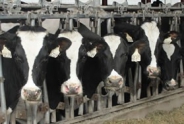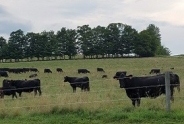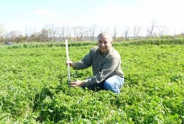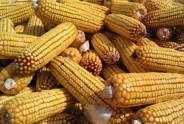Field Crop Update, October 5, 2023
Erik Smith, Area Field Crop Specialist/Team Leader
Central New York Dairy and Field Crops
1. Announcements and Weather Outlook
This is probably our last gasp of summer in 2023. We'll have mild temperatures next week, but there's no guarantee that we'll see a
stretch of warm, dry weather like this until spring. With this in mind, corn silage has been flying out of the field. And rightly so, since
much of the region's remaining silage-bound corn is at or very near peak maturity. See Section 2 for the numbers.
Once again this year I have funding from the NY State Corn and Soybean Growers Association to provide free testing for soybean
cyst nematode in soybean fields. If you're interested, please get in touch.
Further into fall, we're expecting warmer weather than usual, thanks to El Niño. See our weather outlook from Jessica Spaccio
(Climatologist, NRCC):
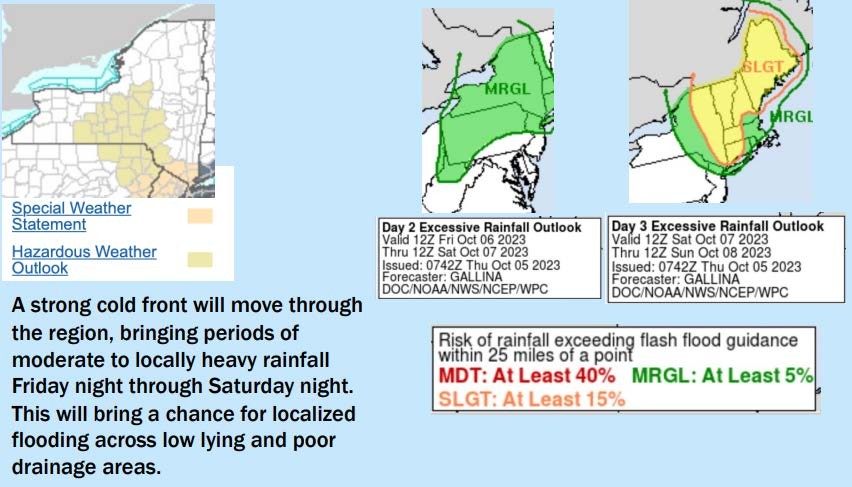
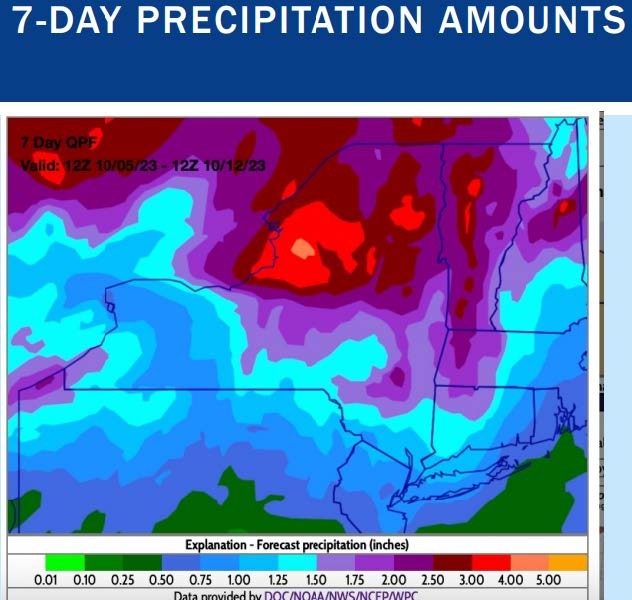
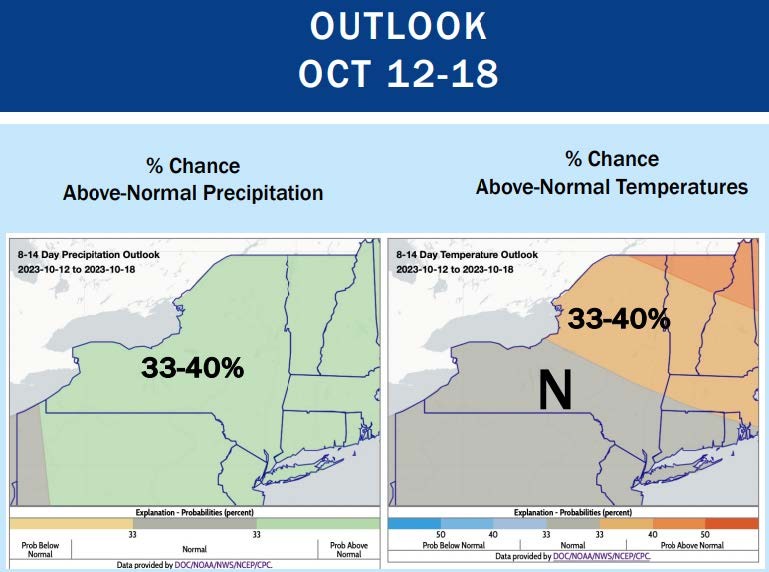
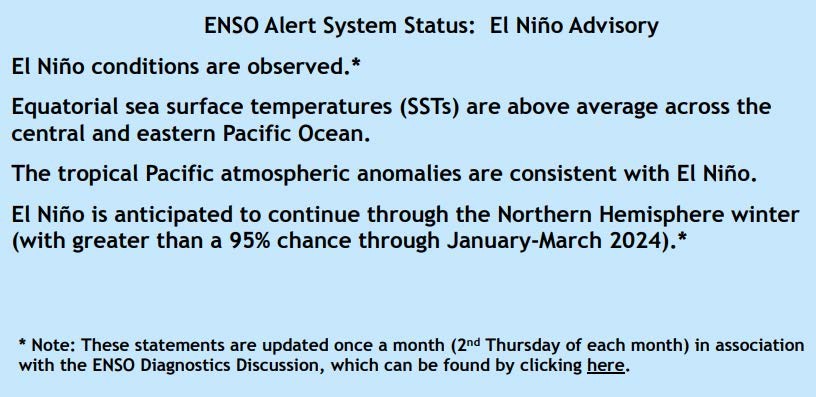
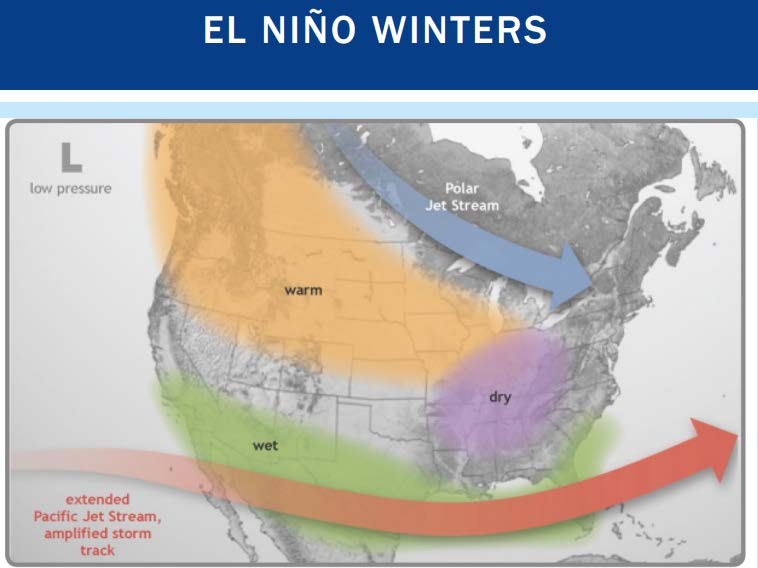
2. Growing Degree Days See: Climate Smart Farming Growing Degree Day Calculator. Check your location, planting date, and silking date. Silage corn
needs 750-800 GDD after silking to reach a whole plant DM of 32%. Under typical late season dry down conditions we can expect the crop to reach 35% DM
four to seven days later. For more details, see this article. No matter what the numbers say, check your crop!
Hybrid Relative Maturity (day length) GDD from silking date to reach ~32% DM
101-110 800
96-100 750
<96 750 or slightly less
Highlighted in green: Gas up the harvester and the trucks (35% DM in 2 - 8 days, depending on maturity)
Highlighted in yellow: See you in the field (35% DM in less than a week):
Highlighted in red: It's either already in the bunk or it's going for high-moisture corn or it's going in the bin for grain (DM likely > 35-40%)

Upcoming Events
Labor Roadshow IX
December 1, 2025
December 9 - December 10, 2025December 17 - December 18, 2025December 22, 2025
In-person and online events to keep NY's agricultural employers informed and prepared for today's labor challenges.
Inspired by Annie's: How to Be a Strong Woman Farm Manager
January 10, 2026
January 17, 2026
Free webinars geared towards women who own or operate a farm in NYS.
2026 Dairy Day
January 13, 2026 : Dairy Day - Hamilton
Hamilton, NY
Lunch included
January 14, 2026 : Dairy Day - Ballston Spa
Ballston Spa, NY
Lunch included
Announcements
Statewide Field Crop Pathology Needs Assessment Survey
Your input is wanted for identifying priorities!Sign Up for Our Weekly E-Newsletter
We send out a bi-weekly e-newsletter that has announcements, upcoming programs, and opportunities for you! Registration is quick, easy, and free. Click here to sign up today!Farmers Can Join MeatSuite For Free!
MeatSuite.com is a free resource provided by Cornell University where NY meat farmers can create a farm profile and list their bulk (wholes, halves, quarters) and bundled (i.e. Grilling Bundle) meat products.Why should farmers join?
1. It's free and easy!
2. Connect with more local customers. In the past year the MeatSuite.com farm directory had 8,300 visits from New York consumers. Farm profiles get as many as 25 views per month from potential local customers. We also spotlight MeatSuite farms on social media and bring attention and purchases to farms through highlights and giveaways.
How do I join?
Farmers can visit https://www.meatsuite.com/farmers/ to create a free farm profile. You must list at least one product for your farm's profile to go live. You'll also have access to Cornell's free Meat Price Calculator, a helpful tool for pricing your meat to make a profit.
While you're on MeatSuite, check out the "Creating Consumer-Friendly Bulk Meats" publication on the log-in page. It has tips on how to create bulk meat products that are easier for first-time buyers to say "yes" to.
If you have any questions as you create your farm profile or products, we're here to help! Please email Matt LeRoux at mnl28@cornell.edu.

